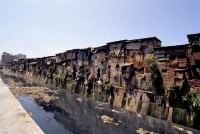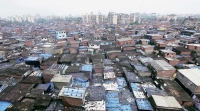- SDG 14 is ‘Life Below Water :Plastic pollution. Increasing levels of debris in the world’s oceans are having a major environmental and economic impact. Marine debris impacts biodiversity through entanglement or ingestion
- SDG 14 is ‘Life Below Water :Coastal waters are deteriorating due to pollution and eutrophication. Without concerted efforts, coastal eutrophication is expected to increase in 20 percent of large marine ecosystems by 2050.
- SDG 14 is Life Below Water :Ocean acidification has increased significantly in recent decades. Open Ocean sites show current levels of acidity have increased by 26 per cent since the start of the Industrial Revolution.
- SDG 14 is Life Below Water :Oceans absorb about 30 per cent of carbon dioxide produced by humans, buffering the impacts of global warming.
- SDG 14 is Life Below Water :Oceans provide key natural resources including food, medicines, biofuels and other products. They help with the breakdown and removal of waste and pollution, and their coastal ecosystems act as buf
Dharavi - Miserable Life In The Slums

“LIFE AT DHARAVI”
Dharavi, Mumbai is Asia's second largest slum spread over an area of roughly 557 acres. This article is not aimed at informing the world about what the generalized viewpoint regarding Dharavi and especially a slum area. Undoubtedly there are a million reasons one can have to pity Dharavi but the real picture is something really different.
Dharavi is home for close to a million people and it shelters a variety of people with a wide range of occupations. Most of the people in Dharavi are daily workers and have to spend a tuff life working almost 12 hours a day.The major occupation of people here is the waste collection and segregation waste being the only thing that costs nothing to have and can give a considerable benefit on being sold.
Having known that an aspect of Dharavi is also that it is market to some of the finest leather goods that are manufactured and sold in Dharavi itself. It is difficult to believe but there are people in Dharavi who travel daily to foreign marketplaces to get their goods sold and they are not poor rather have a good source of income. Visitors from around the globe come to Dharavi to buy leather goods.Dharavi plays quite a significant role in increasing the GDP of Mumbai. For instance, if we assume the GDP of Mumbai to be close to 20% then 5-6% of it is generated in Dharavi.
It is a place where talent gets its dimensions. There are kids living in this slums who get to study barely one time a day in such difficult living conditions and low lighted rooms where the entire family gets accommodated who a work during the day and study during the night hours and still when they appear for the local school examination they are way better than the privileged lot.
Dharavi has its own way of merry-making. Just imagine for a while people who work 12 hours a day and live in such conditions and still are happy. The kids are happy playing with the old tyres, the men happy making business all day long, the women happy meeting the family needs and helping run the family.In 2002 the government had plans to demolish the entire Dharavi and build around 40-48 megastructures and accommodate the people there but this decision met with high protests and resentment from the public as well as some other bodies didn't support this idea. These actions quite clearly display the attachment people have to those small places we call slums. They have found a living, they see conditions getting worse, they see bad monsoon, they see darkness around but the same Dharavi is home to people who are not economical poor or are facing any hardship.Indeed Dharavi shows us both the sides of the same coin.


SHAIKH EHETESHAM ALLI, IMIA003
